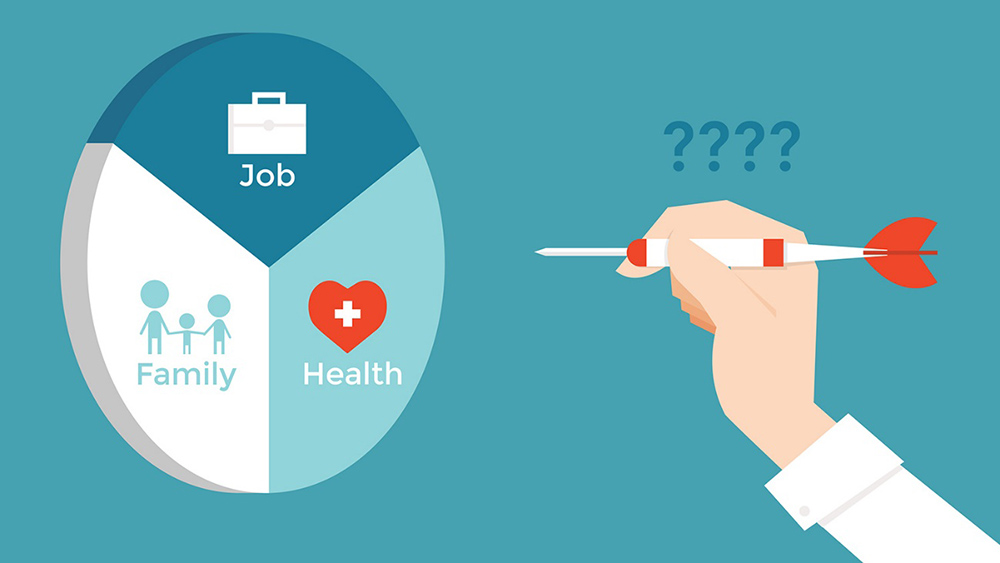Aligning pharma business objectives with patients’ life goals
-Applying the patient insight approach of drug development to communications-
Healthcare in Japan is undergoing drastic change. To address these shifting trends, COSMO co-hosted an online seminar with global pharmaceutical news media Insights4 Pharma.
The seminar succeeded in spotlighting the crucial role of patient insights, particularly:
• The pursuit of patient insights leads to early detection of disease, prevention of serious illness, improved adherence, and improved healthcare outcomes.
• A solid understanding of patient insights enables the provision of appropriate information to patients, which leads to a positive cycle in which patients are satisfied with their treatment choices and continue their treatment.
• Patient Reader is a social listening tool for understanding customers in the new era. It analyzes patient insights by extracting social media posts by patients and their family members from social media big data.
• How pharma business objectives can be aligned with patients’ life goals.
Healthcare in Japan is undergoing a significant transition. It is shifting from an environment in which patients passively receive, to one in which patients proactively research and choose their treatment.
This trend is not only bringing about changes to the ways in which patients search for information or converse with their healthcare provider, but also to the R&D efforts of pharmaceutical companies as they develop their products.
Whereas healthcare once took an outcome-oriented approach with a focus on visible symptoms and a specific disease in question, it is now shifting toward a “life goal approach,” in which patients’ broader issues and needs are also addressed.
With this transition in mind, how can the patient insight approach be applied to other areas of pharmaceutical companies’ business?
To address this question, Cosmo Public Relations (“COSMO”) teamed up with global pharmaceutical news media Insights4 Pharma to hold an online seminar on 27 April, 2021, titled: “Aligning pharma business objectives with patients’ life goals; Applying the patient insight approach of drug development to successful communications.”
Insights4 Pharma’s Chief Editor and global pharma consultant Seigo Maeda opened the event by referencing changes to the ways in which we deliver and receive information today:
“News forms the basis of most information we access every day, but it is diversifying and expanding beyond surveys, interviews, press releases, academic society meetings, and papers, to electronic data, healthcare reimbursement data, and other real-world data – as well as blogs and information found in general and patient group-specific social media. All this information can at times feel like it is creating chaos. In order to develop commercially successful drugs that meet the needs of patients, the pharmaceutical industry can make use of services, specialist consultants and events like today’s to accurately leverage its insights and maximize outcomes.”
Presentations were made by COSMO Healthcare Senior Account Director, Yuka Kayashima on “The transition to a patient insight approach,” and Transsages & Co. CEO, Shintaro Takiguchi on “Patient insight analysis in social media big data and its use for strategy development.”
Summaries for both presentations follow below.
The transition to a patient insight approach
Yuka Kayashima, Senior Account Director, COSMO Healthcare
What exactly do we mean by “patient insight”? At COSMO Healthcare we define it as:
“Exploring patients’ unseen needs and thoughts to develop sustainable relationships with them; examining what drives patients to receive medical care and treatment; and understanding what information, communication, and services are most effective for patients.”
Gaining a deeper understanding of patients’ decision-making processes and knowing what truly meets their needs enables us to more effectively influence mindsets and behaviors. The patient insight approach can contribute significantly to prevention and early detection of diseases, improved adherence to treatments, and overall enhanced healthcare outcomes.
Leveraging patient insight for wider use
Consumer demands and preferences are easy to define when it comes to general products and services – for example, they want to purchase a useful item or eat something delicious. But in the case of healthcare, understanding and correctly interpreting patients’ insights represents a greater challenge.
No one wants to be a patient. So it is not uncommon for there to be an unconscious disconnect between a patient’s desires, wishes, values, and emotions, and a difficult-to-accept reality.
The fundamental driver is a desire to return to normal, or to be cured. This often impacts patients’ ability to judge risks, leading to misunderstanding or conflicting perspectives with that of their healthcare provider. Helping patients to understand the situation and building trust by providing easy-to-understand information and managing expectations are therefore essential.
The concept of “patient insight” has grown in recent years to become a regularly used term among pharmaceutical companies, much like the “patient centric” approach. However, there remains strong opportunity for the concept to be leveraged more widely across all areas, functions, and processes of an organization.
Key takeaways from COSMO Healthcare’s Patient Insight Report
COSMO Healthcare published two reports in 2020 and 2021*: “Patient Insight Report – Cancer” and “Patient Insight Report – Women’s Cancer,” compiling results from a nationwide survey conducted exclusively by COSMO of 300 patients of the ten most prevalent cancers on topics including patients’ attitude toward cancer treatment.
Both reports served to remind us that there is no single picture of what it means to be a “cancer patient.” Patients are diverse and insights differ greatly according to cancer type, patient profile, phase of treatment, and attitude toward treatment.
For example, when asked about preference for selecting treatment, 47.7% on average responded that they would like to select treatment methods they are convinced of from a list of multiple options. Yet, the volume of patients who wished to do so when separated by cancer type ranged from 33.3% to 76.7%.
Regarding searching information on treatment, an average of 51.6% said they would like to select treatment based on information they searched, but ranged from 33.3% to 84.6% according to cancer type. For information source, women’s cancer patients showed notable tendencies toward prioritizing peer information, or information shared by other patients.
Other notable results included those regarding what patients searched for in terms of treatment. On average, 3.5% answered “effectiveness of medication”, while 19.7% answered “adverse reactions,” revealing that the number of patients concerned about side effects is six times higher than those who search for adverse reactions.
In terms of awareness in selecting prescription drugs, 46% on average said they were concerned about drug prices, and surprisingly, 23% on average said they look into the reputation of the drug’s manufacturer.

*Visit here for details of COSMO’s Patient Insight Reports on cancer and women’s cancer, including how to purchase.
Patient insights shine a light on our unconscious bias
I have worked with patients of a number of diseases besides cancer. In doing so, there were many occasions where I was forced to realize my own unconscious bias toward patients and their families.
For example, hemophilia patients vary greatly in terms of the extent to which they are affected by the disease. One particular patient who was managing their daily life with self-injections was determined to be treated as healthy by those around them and prove that they could take on any challenge just as a healthy person could and deliver results. The patient did not disclose their disease to colleagues and requested not to be labeled as a “patient.” We often say things such as “patients of X disease” when communicating, but in doing so we may be reducing our ability to reach those patients who are trying to distance themselves from such labels.
Understanding patient insights and enhancing output
Potential outputs may be greatly enhanced by properly understanding patient insights using a combination of methods. For example, in COSMO’s aforementioned Patient Insight Report, analysis results on cancer patient insights show that although 80% search information on treatment methods, only 28.2% are not able to understand the information and end up following doctors’ recommendations.
Working to reduce this number is where opportunity lies. If we can provide patients with appropriate information, it will prompt a positive cycle – patients will select treatment options they are convinced of, patient satisfaction will improve, and patients will continue to receive treatment.
That is why COSMO Healthcare makes sure from the outset to avoid words such as “remission,” “prognosis”, and other terms that are not easily recognized by the general public in all patient communications, and instead provide information that is easy for patients to understand.
COSMO Healthcare also provides shared decision making-related services that assist patients in their decisions on treatment, and this is an area where we have been receiving increasing levels of interest recently.
Finally, another point that caught our attention in the analysis of cancer patient insights was that 23% of patients responded that they would check the reputation of the pharmaceutical company manufacturing their prescribed medication, and 36% of patients responded that they would check the manufacturer of their prescribed medication when they hear news about pharmaceutical company misconduct.
This again is where communication activities have an opportunity to make significant impact. We believe that continued efforts to build corporate reputation and communicate positive messages when times are good are key in preparing for any negative circumstances that may arise.

There are different methods to choose from when it comes to understanding patient insights, so we strive to propose the most appropriate method according to patient environment and objective.
We are collaborating with partners to deliver these, with one being Transsages & Co., whose representative director, Shintaro Takiguchi will today introduce a new social listening method that has been attracting attention lately.
(Reference: Yukari Sugimoto, Exploring Patient Insight, Chikura Shobo, 2020).
Patient insight analysis in social media big data and its use for strategy development
Shintaro Takiguchi, CEO, Transsages & Co.
Of the various solutions we provide to pharmaceutical companies, today we would like to introduce “Patient Reader,” a social listening tool and research method that allows us to understand customers by extracting posts by patients and their families in social media big data, according to pre-determined themes for patient insight analysis.
What is Patient Reader®?
Patient Reader was created against the backdrop of an era of unpredictability known as VUCA, which stands for Volatility, Uncertainty, Complexity, and Ambiguity.
In the past, strategies were developed based on logical thinking, deduction, and induction. Today we are shifting toward a “design thinking” approach to better navigate the VUCA age, as demonstrated by Patient Reader.
Whereas the conventional approach would first develop a hypothesis and verify it with market research, design thinking begins with “abduction,” or the point where hypotheses are developed.
There are five steps, the most important in the first phase being empathy, which focuses on how much one can emphasize with users. I believe this part can be leveraged across various areas of patient insight.
To achieve empathy, it is important to have a holistic perspective or a bird’s-eye view of the overall big picture. By looking at as much information as possible, diverging from this, and then defining issues, we can move closer toward developing patient-oriented strategies and advancing development activities.

Patients’ attitudes and behaviors: Seeing the big picture and revealing insights
While conventional surveys such as questionnaires or interviews focus on “hypothesis testing,” Patient Reader focuses on “hypothesis discovery.” Conventional surveys can usually pool up to 2.5 million at the most, whereas social media pools used by Patient Reader are characterized by their overwhelmingly large size of 200 million IDs.
Conventional surveys set questions beforehand, but Patient Reader does not. This allows us to get a bird’s-eye view of contributors’ experiences without unconsciously enforcing any initial bias in questions. Patient Reader is a research method made possible by the emergence of social media that allows us to grasp real-life insights from the casual conversations of the contributors themselves. By analyzing the real-world voices of patients, it is possible to gain first-hand understanding of patients’ attitudes and behaviors and subsequently reveal fresh insights.
To briefly introduce Patient Reader’s analysis process, we start by listening for specific topics set by the client, which for pharmaceutical companies would be the subject disease, product, or competitors. From this, we research the current status of the disease and medical treatment, set keywords, and proceed to provisional post extraction data extraction steps.
At this stage, we may provisionally extract several hundred thousand to several million posts. From this, we eliminate unnecessary data, such as gossip stories and duplicate posts, and move on to the data cleansing step, using technologies such as NLP (natural language processing). This narrows down the list to about 1,000 posts, and after a final review of posts by an analyst, a report is created. The whole process takes one and a half to two months.
Example Patient Reader analysis
Let’s look at a case where the unmet needs of intractable and rare immune disease patients were analyzed and strategic focus was realigned as a result.
In the initial agenda-setting stage, it was thought that the issues lay in the early phase for patients, during the period from onset to information search. Some believed that patients were unable to decide on their own whether to go to hospital, even if symptoms were manifesting. Others speculated that even if patients decided to go to hospital, they were not sure which hospital or department they should visit.
Patient Reader’s analysis of posts was able to shine a light on this by finding patients earnestly expressing their struggles in their own words, such as: “Even if I go to the hospital, the doctor does not diagnose what disease I have, and I am repeatedly transferred to other hospitals and end up not being able to start treatment,” or “Sometimes my primary doctor gives up. Doctors themselves don’t know what the best treatment is.”
This discovery enabled us to confirm that the problem lies in the medical examination, diagnosis, and treatment phase. We revised the strategic focus to “clarifying facilities offering medical examinations and awareness of the diseases” and proposed the solution of promoting “early diagnosis and treatment, and raising awareness of the diseases among specialists.”
Patient Reader is also used for confirming and positioning product strategy points, creating promotion plans, and setting themes for discussion with doctors. Social listening has only become possible in the age of social media and offers a means by which to gain a bird’s-eye view of subject matter in a way that is clearly different from other conventional quantitative and qualitative market research options out there.

Note: Patient Reader is a registered Transsages & Co. trademark. For inquiries about Patient Reader, please visit here .






